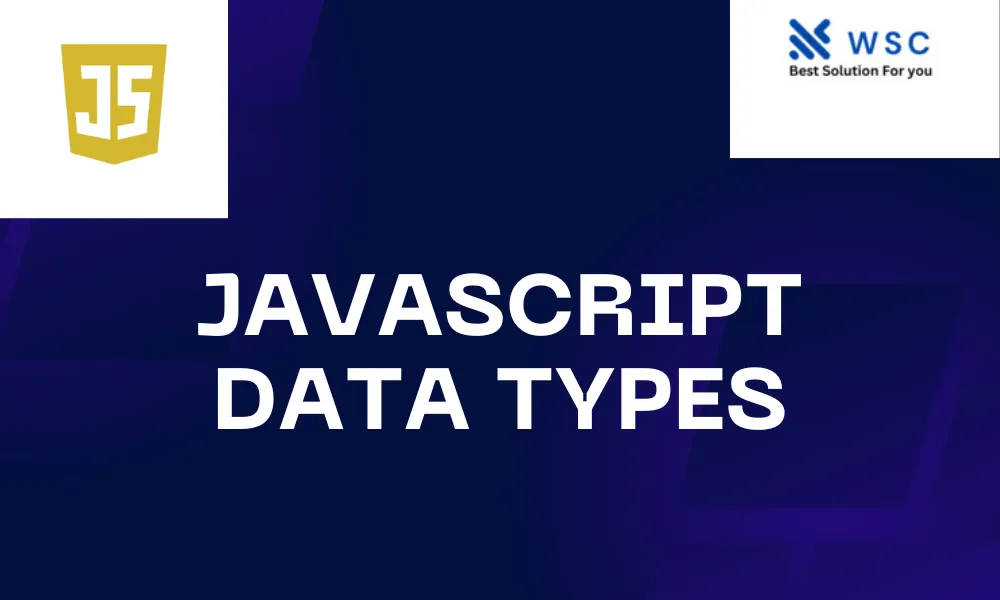JavaScript is a versatile programming language that allows developers to work with different data types. In this article, we will explore the fundamental JavaScript data types, understand their characteristics, and provide practical examples to solidify your understanding.
Delve deeper into the world of JavaScript data types to enhance your coding skills. Uncover the nuances of primitive types like strings, numbers, and booleans, and gain proficiency in handling undefined and null values. Discover the power of symbols for unique identifiers. Transition to object data types, including objects, arrays, and functions, mastering their applications in real-world scenarios. The provided practical examples guide you through concatenating strings, utilizing booleans in conditional statements, and leveraging arrays with loops. By the end, you’ll confidently navigate JavaScript’s diverse data types, empowering you to create robust and dynamic applications effortlessly.
Introduction to Data Types
In programming, data types define the kind of values a variable can hold and the operations that can be performed on them. JavaScript has several built-in data types, broadly classified into two categories: primitive data types and object data types.
Primitive Data Types
- String:
- Represents textual data.
- Enclosed in single or double quotes.
let greeting = "Hello, World!";
Number:
- Represents numeric values, both integers and floating-point numbers.
let age = 25;
let temperature = 98.6;
Boolean:
- Represents a logical entity with two values:
trueorfalse.
let isRaining = true;
let hasSunshine = false;
Undefined:
- Represents a variable that has been declared but not assigned a value.
let undefinedVariable;
Null:
- Represents the intentional absence of any object value.
let emptyBox = null;
Symbol:
- Introduced in ECMAScript 2015 (ES6).
- Represents a unique identifier.
let id = Symbol('uniqueID');
Object Data Types
- Object:
- Represents a collection of key-value pairs.
let person = {
name: "John Doe",
age: 30,
isStudent: false
};
Array:
- Represents an ordered list of values.
let colors = ["red", "green", "blue"];
Function:
- Represents a reusable block of code.
function addNumbers(a, b) {
return a + b;
}
Practical Examples
Let’s explore some practical examples to better understand these data types:
Example 1: String and Number
let firstName = "Alice";
let lastName = "Johnson";
let age = 28;
let fullName = firstName + " " + lastName;
let message = "Hello, " + fullName + "! You are " + age + " years old.";
console.log(message);
Example 2: Boolean and If Statement
let isRaining = true;
if (isRaining) {
console.log("Don't forget your umbrella!");
} else {
console.log("Enjoy the sunny day!");
}
Example 3: Array and Loop
let numbers = [1, 2, 3, 4, 5];
let sum = 0;
for (let i = 0; i < numbers.length; i++) {
sum += numbers[i];
}
console.log("The sum of numbers is: " + sum);
Example 4: Object and Function
let student = {
name: "Bob",
age: 22,
grades: [80, 90, 75],
calculateAverage: function() {
let total = 0;
for (let i = 0; i < this.grades.length; i++) {
total += this.grades[i];
}
return total / this.grades.length;
}
};
console.log(student.name + "'s average grade is: " + student.calculateAverage());
Conclusion
Understanding JavaScript data types is crucial for effective programming. By mastering these concepts and practicing with real-world examples, you’ll be well-equipped to write robust and efficient JavaScript code. Keep experimenting and building to solidify your knowledge!
- Check our tools small Tools
- Check our tools website Word count




